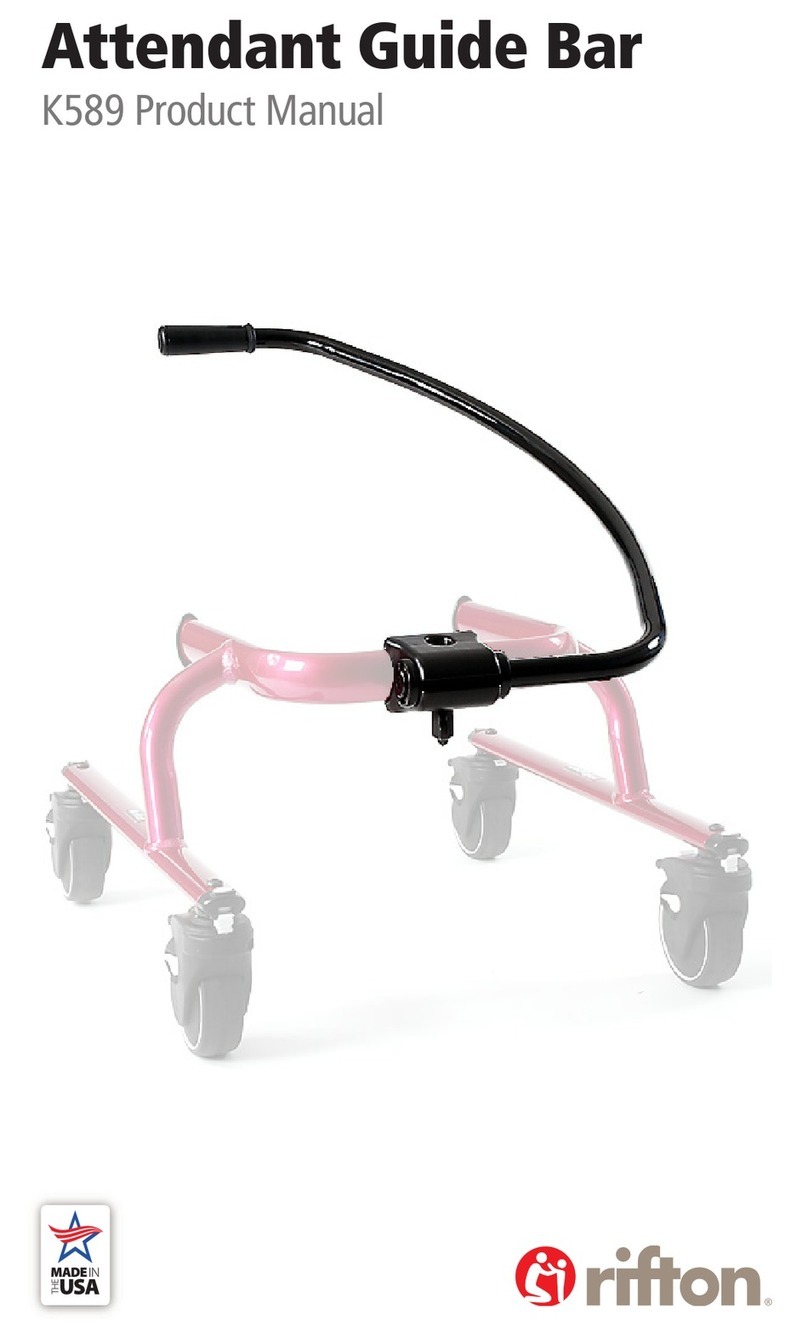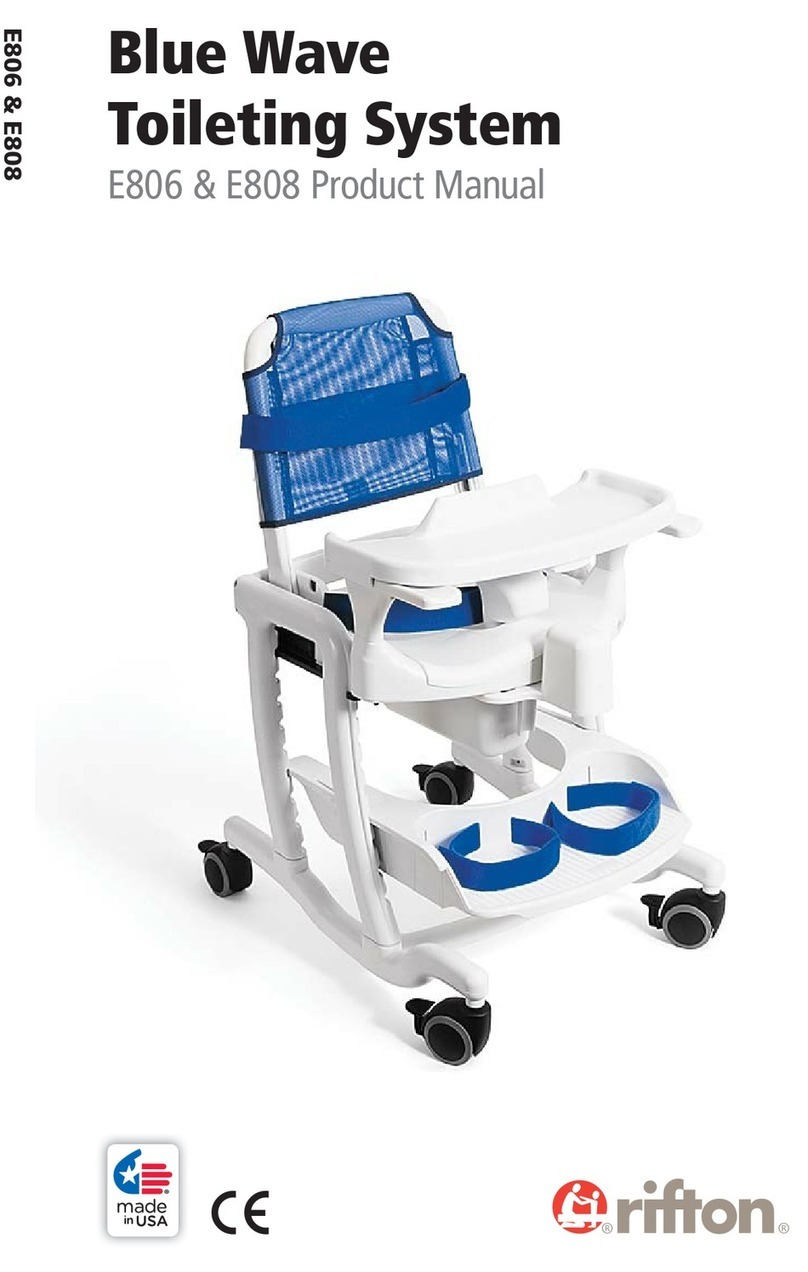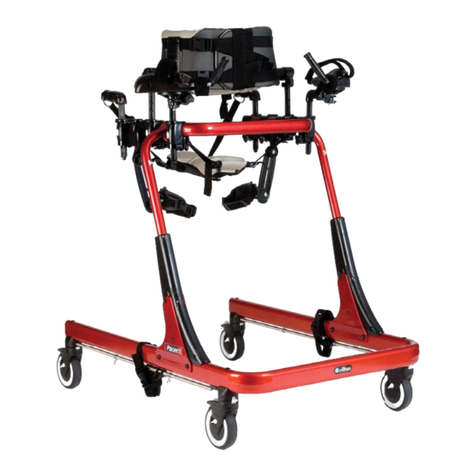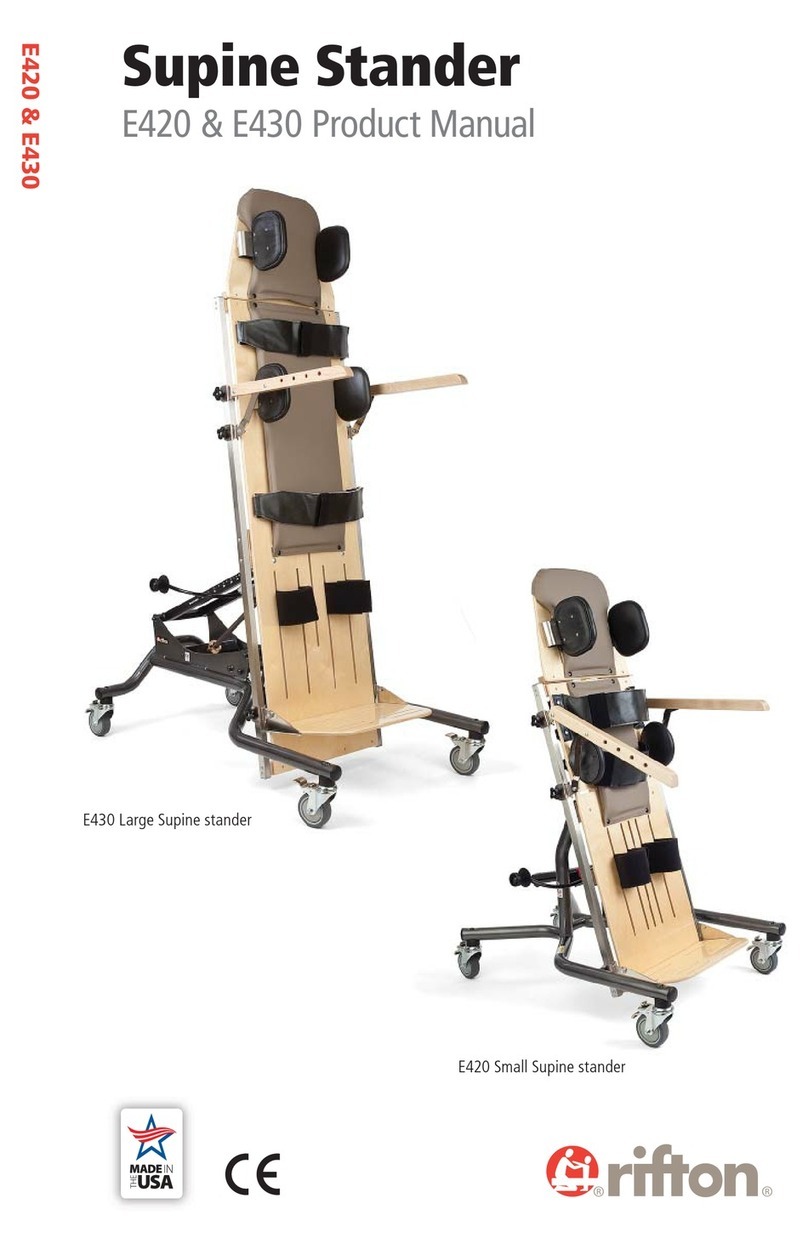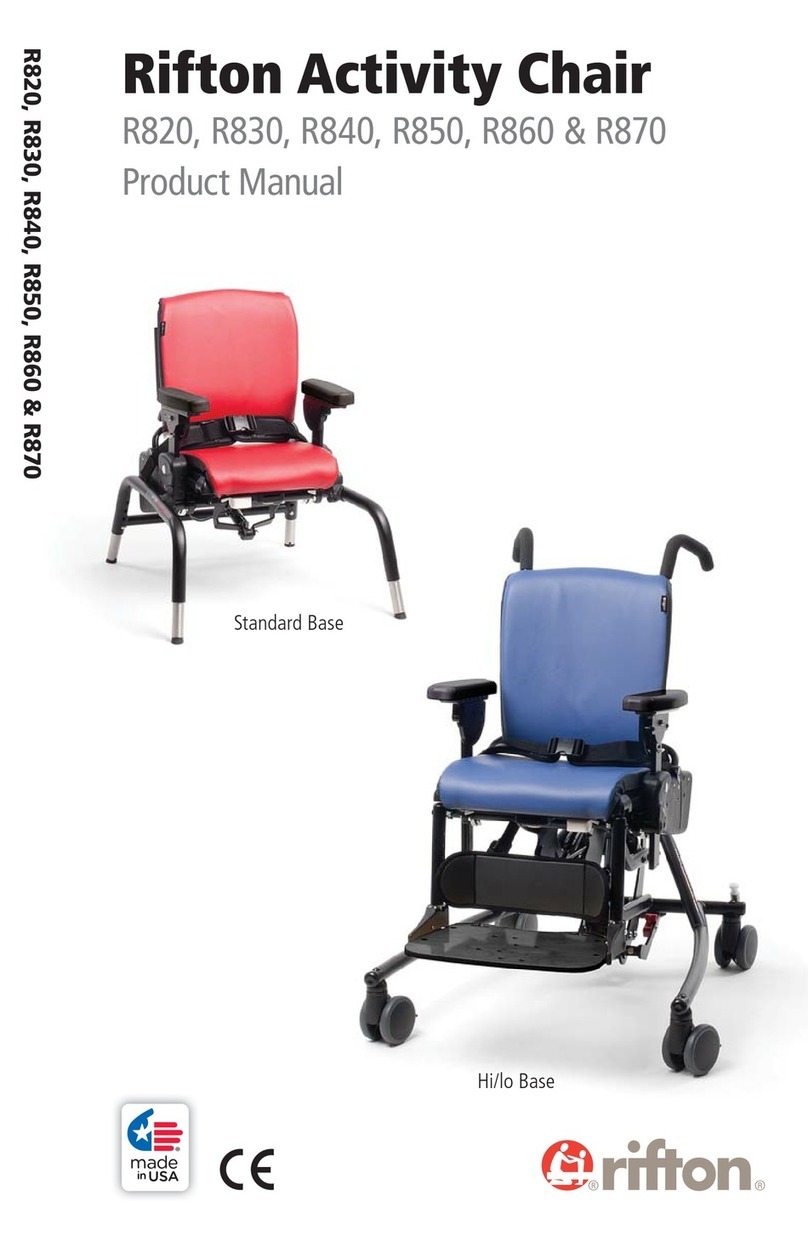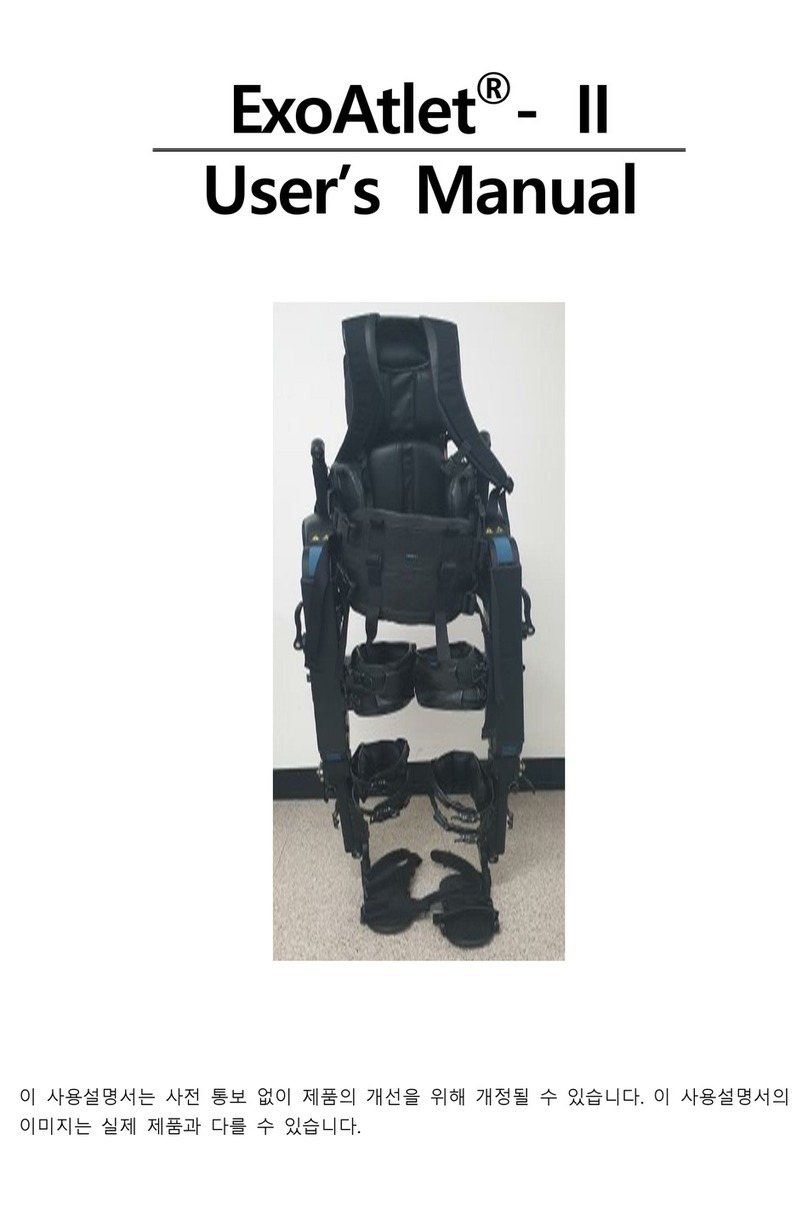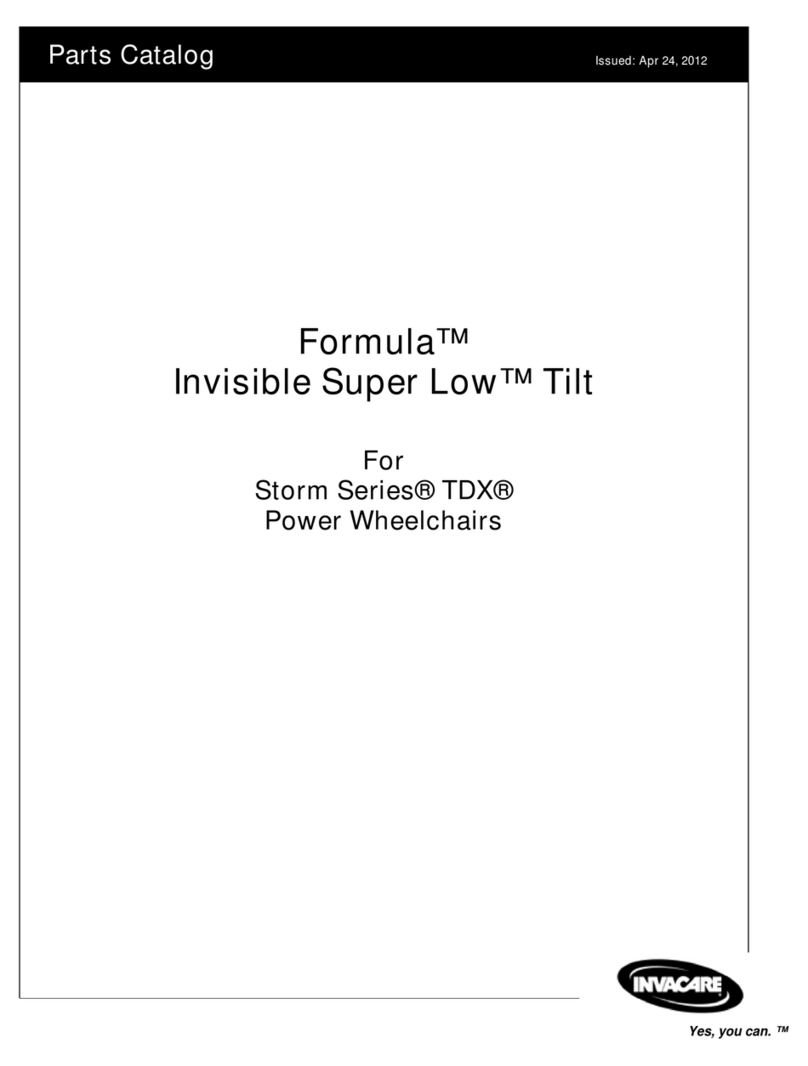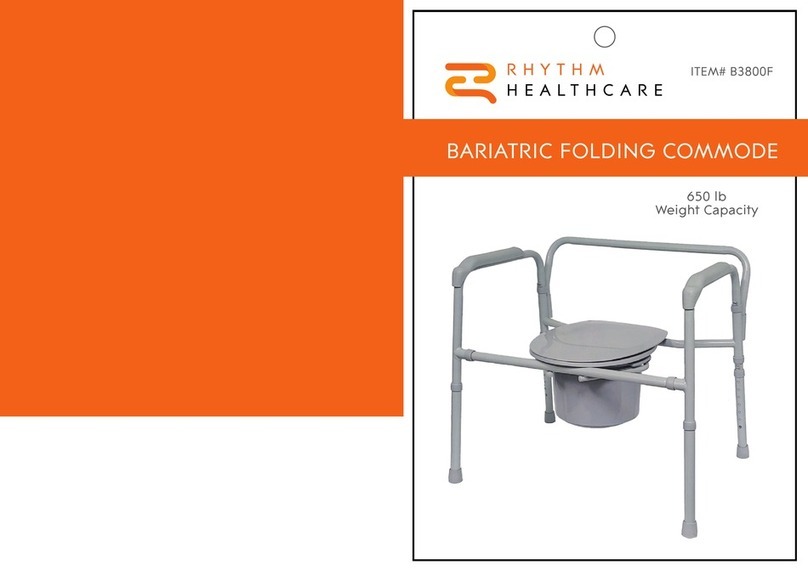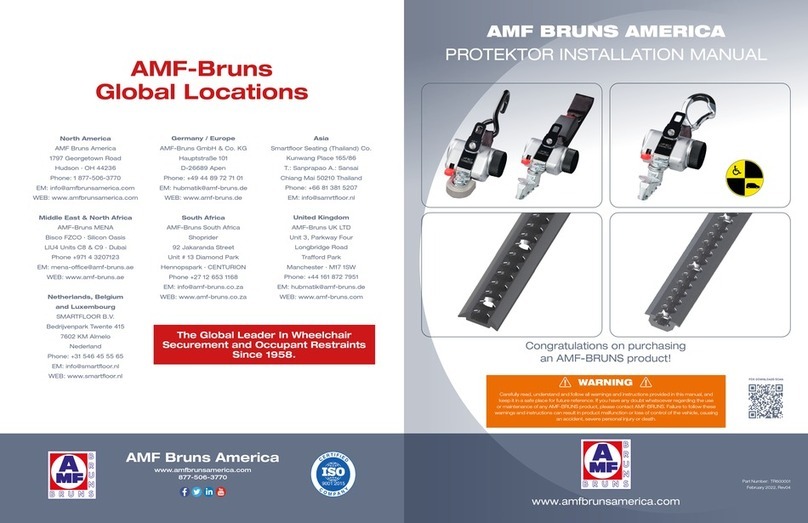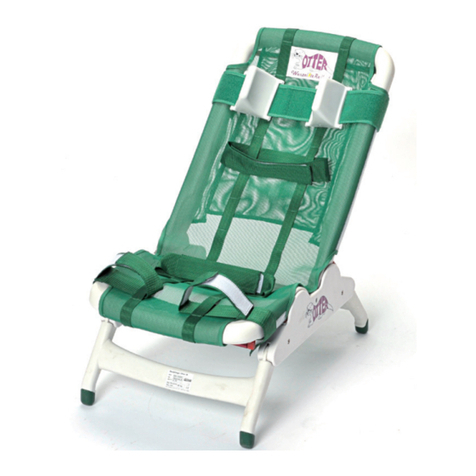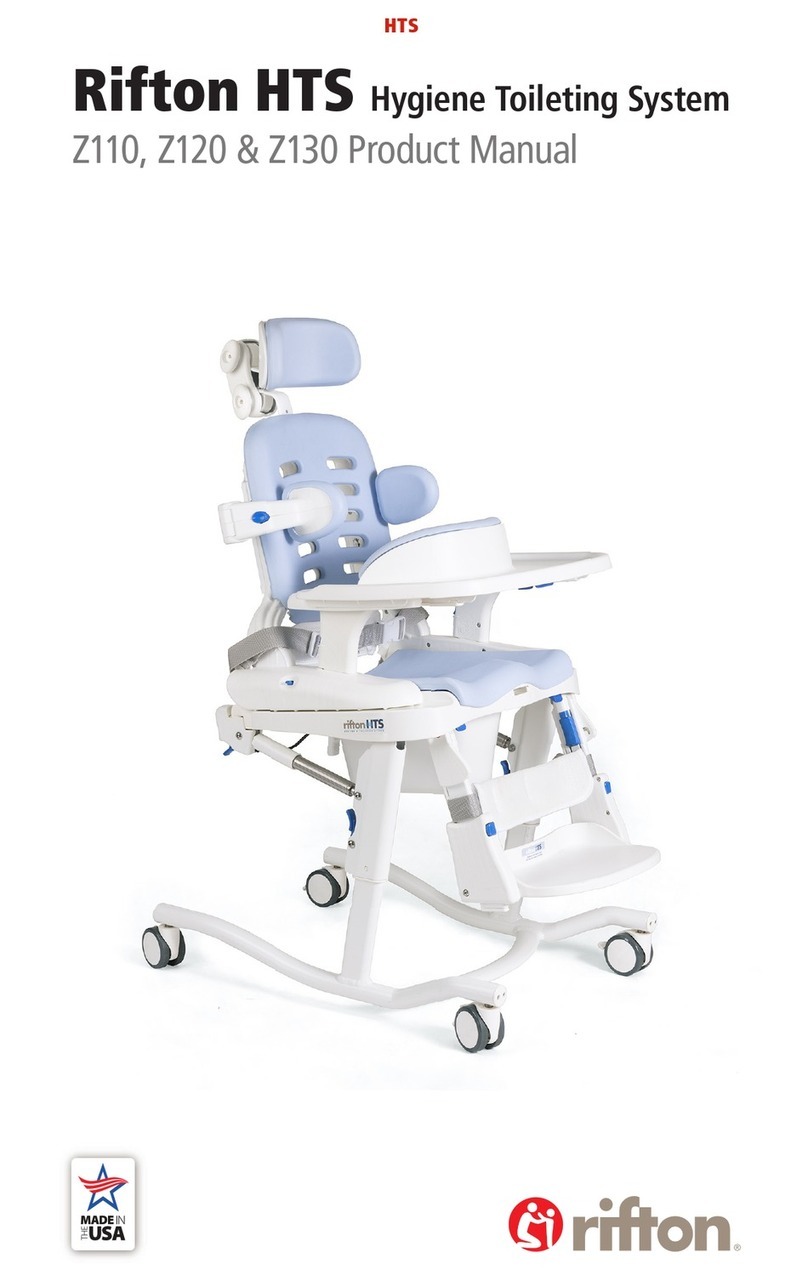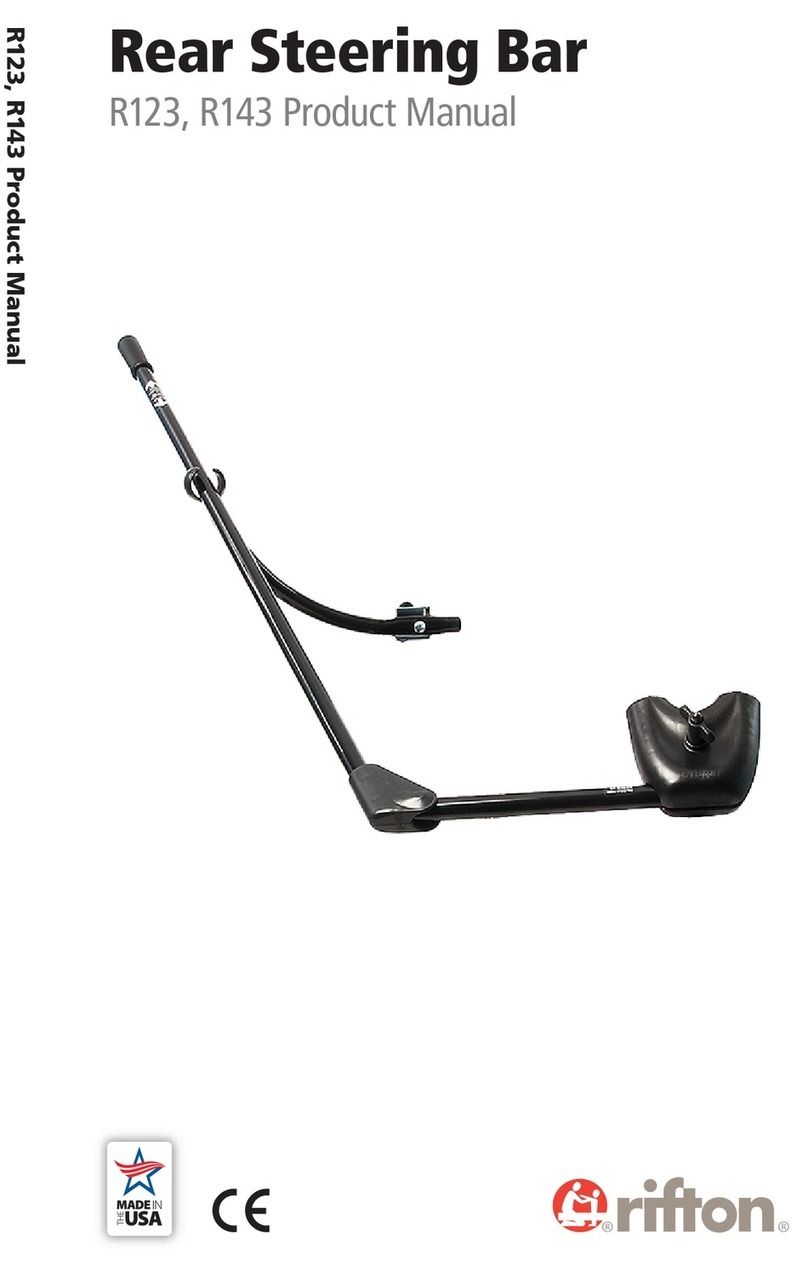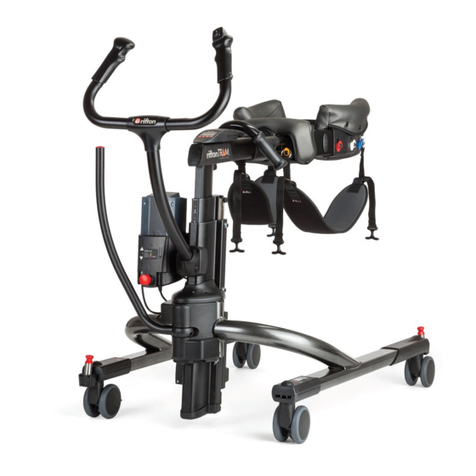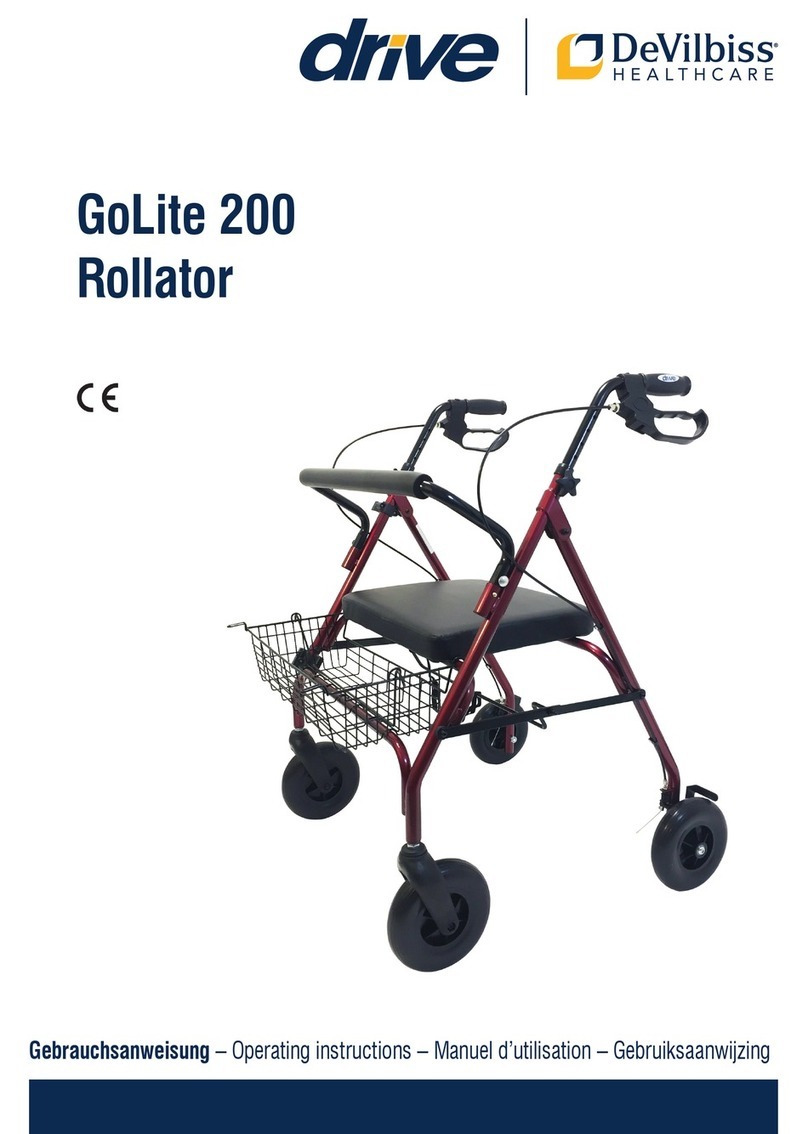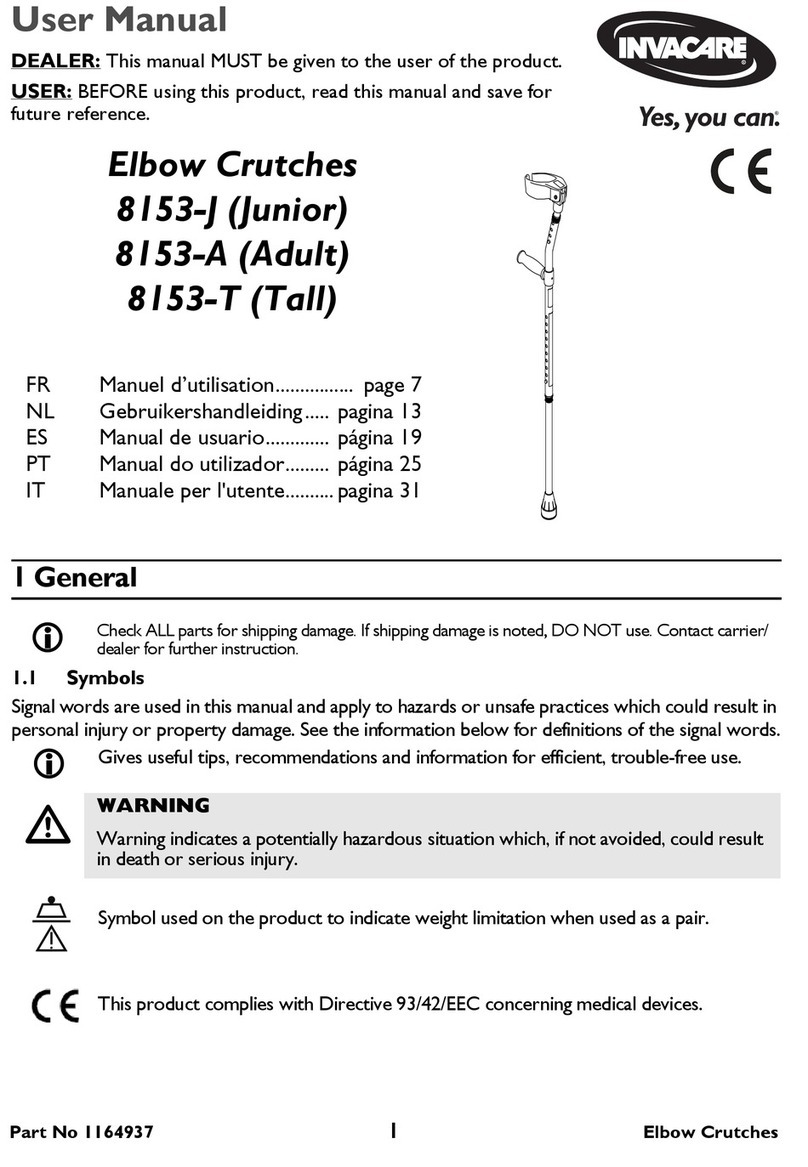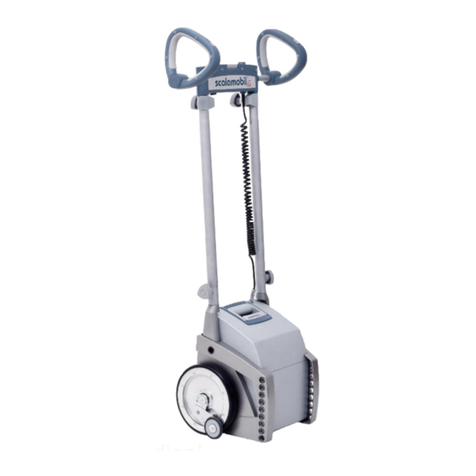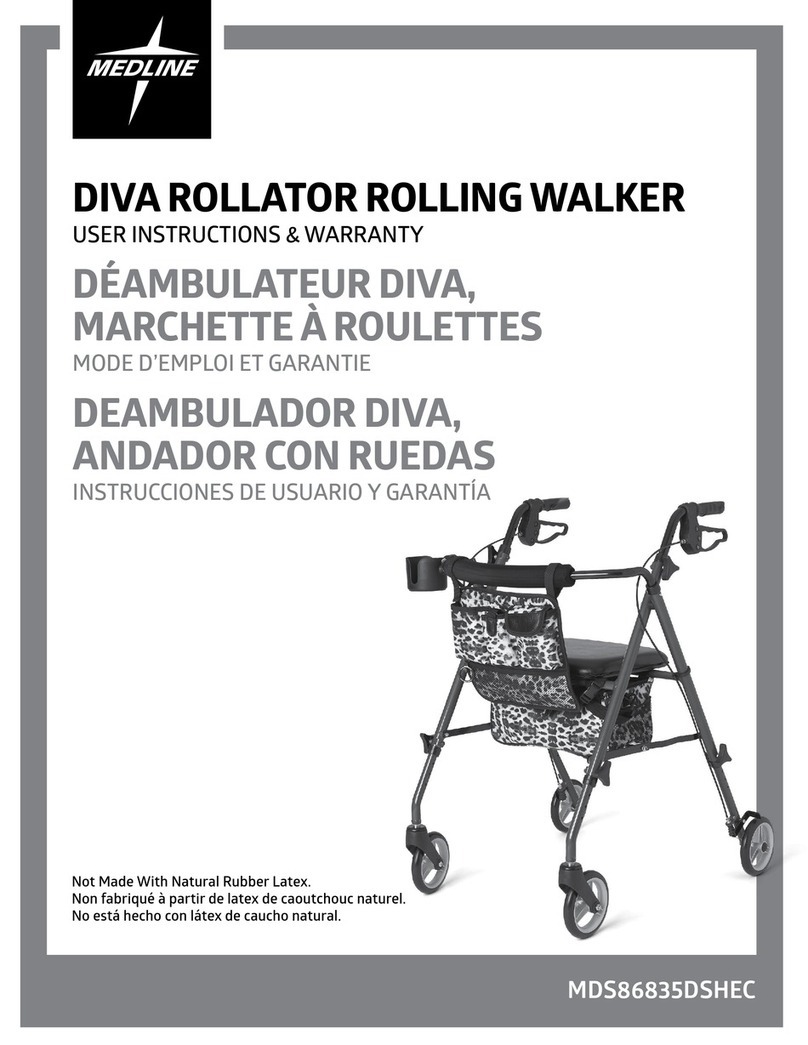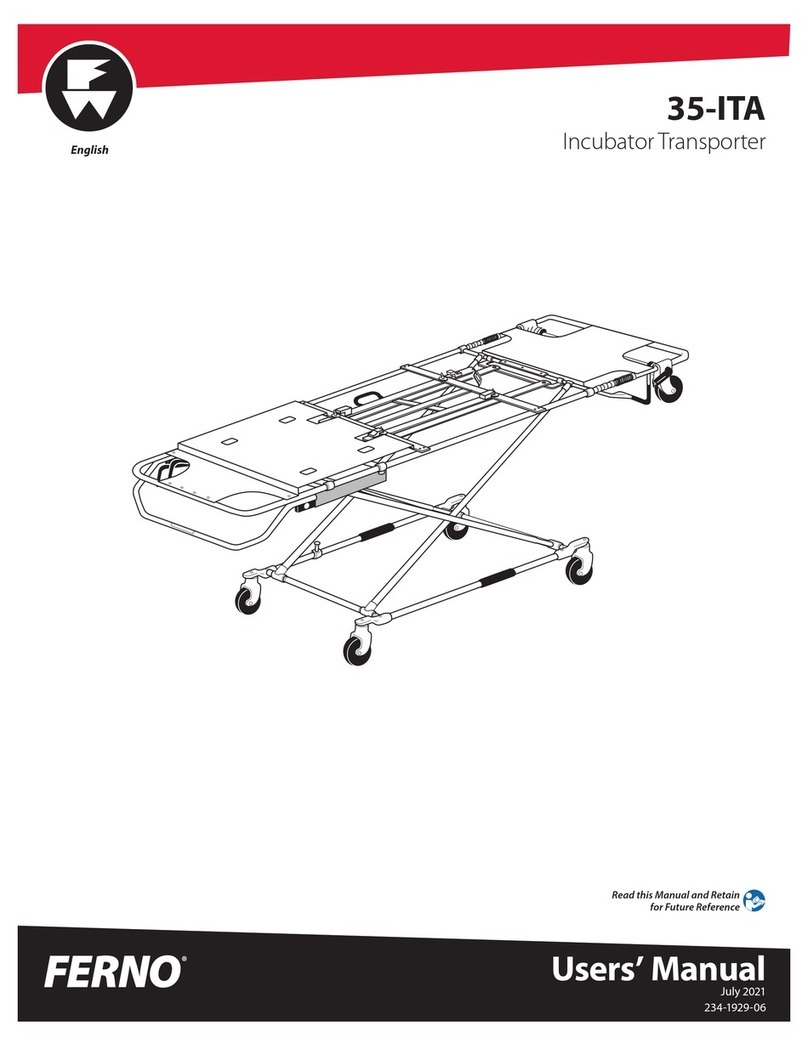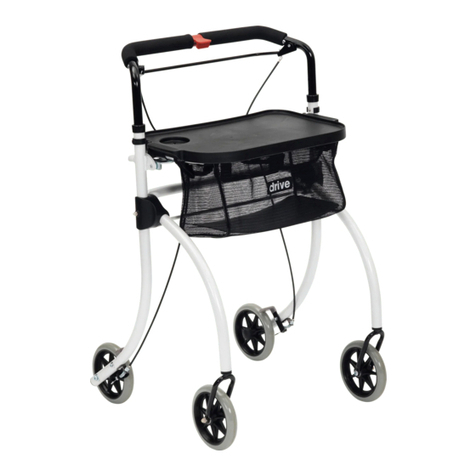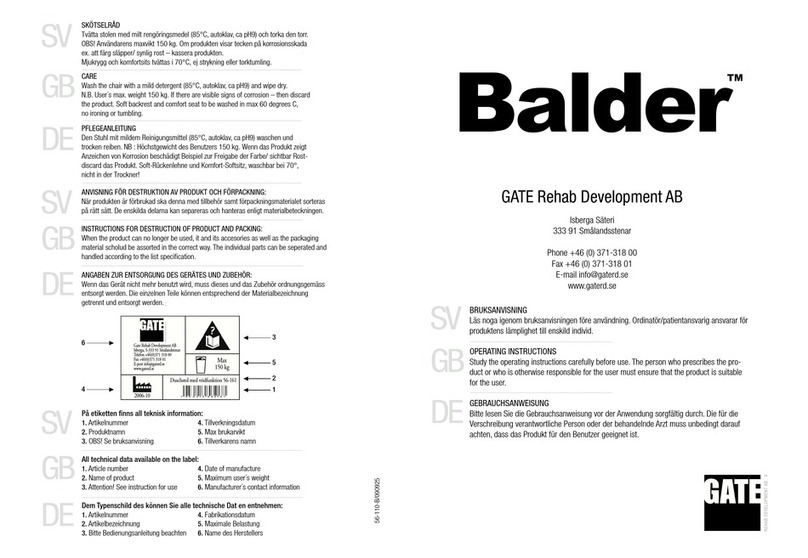
3
• Thoroughly read and understand the information in this product manual before
attempting to use this product. If the procedures and instructions in this product manual
are not followed, serious injury or death could occur.
• The E-Pacer may not be appropriate for all clients. The client’s therapist or physician
should assess the appropriateness and safety of the E-Pacer for each user. For example:
○The E-Pacer must only be used for clients who meet the weight and height limits
specified in this manual.
○Clients will experience some pressure to soft tissues when lifted with the E-Pacer. It
may not be appropriate for individuals with fragile skin.
• The E-Pacer should be operated only by and under the direct supervision of a qualified
caregiver who has reviewed and understands this manual.
• To prevent falls and injuries:
○Do not use the E-Pacer on rough or uneven terrain, around swimming pools or near
stairways.
○Stop lifting immediately if the body support system slides up under the armpits while
lifting. This may be caused by slippery outer clothing, a client with low muscle tone or
a body shape and size that is inappropriate for the E-Pacer.
○Lift the client no higher than is necessary to perform the intended transfer.
○Always retract the base legs when maneuvering the E-Pacer while it is supporting a
client in the seated posture; expand the base only when necessary.
○When using the E-Pacer for walking support, the base frame should be expanded to
increase sideways stability if required by the condition or stature of a particular client;
the caregiver must make this judgment on an individual basis.
○Never leave a client unattended in the E-Pacer.
○Ensure the use of straps and supports at all times. Straps and supports are provided
for the safety of the user and must be carefully adjusted for comfort and security.
○The E-Pacer is equipped with two non-removable back belts with safety buckles.
Always ensure that the back belts are in place and that the release tabs on all buckles
are fully latched before initiating a lift or transfer.
○When the E-Pacer is used in the posterior configuration, with the client facing
rearward in the device, the client can access the back belt safety buckles. The E-Pacer
should not be used in the posterior configuration with clients of unreliable judgment
who may unintentionally release the safety buckles while supported by the device. The
caregiver must assess whether posterior use is appropriate for an individual client.
WARNING
